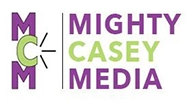From HX Refactored in Boston in June 2017, this – “Jeopardy Meets The Price Is Right, Healthcare Edition” HXR 2017: Casey Quinlan: Jeopardy + The Price Is Right: Health Care Mashup Edition from HxRefactored on Vimeo.
The Insane Clown Car Posse (hat tip to my buddy Robb Fulks for that lovely turn of phrase) that’s currently at the helm of the ship of state here in the good old USA has started to give us a peek at their plans for US healthcare. The phrase “shit show” seems to have been invented just so it could be used to describe the excrescence that’s emerging, inch by fetid inch, under the banner of the AHCA, full title “American Health Care Act.” [Personally, I call it “the new National Eugenics Plan,” since the savings the legislation’s backers crow about are clearly gained from sick folks just dyin’ quicker.] Maybe we could tag it as GOTCHA, “Government Out To Cut Healthcare Access?” Asking for a friend. “Make America Sick Again!” seems to be the sales pitch here. After the gnashing of teeth, rending of garments, and fisticuffs that marked the passage of the Affordable Care Act in 2010, the ACA haters – we’ll call them “the entire Republican Party, and all who sail in it” – spent the rest of Obama’s Presidency voting to repeal the law, while doing very little else. What the ACA, or “Obamacare,” accomplished was to finally put the theory of universal healthcare access on the table for Americans, who had spent the 20th century watching pretty much every other developed nation on the planet create either single payer (a la Britain’s NHS) or insurance-based universal access (in Germany and Switzerland) healthcare delivery systems for their folks. I say “theory of universal access” because, like all Congressionally-ground sausage, it’s a mix of top cuts of awesome (10 Essential Benefits! Tax Subsidies on Premiums!) with awful offal from the abattoir floor (too much power concentrated in the hands of AHIP, ridiculously narrow networks, uneven Medicaid expansion)….
When you hear the word “monopoly,” does it fill you with a warm and fuzzy feeling? (Unless you’re Hasbro, you really should say no, unless you’re a cyborg.) Healthcare is a monopoly. We can’t DIY cancer treatment, or surgically repair a broken hip for ourselves, so we have to go to the medical-industrial complex to regain our health if we wander into the weeds, health-wise. We also have deep difficulty accessing pricing information. I’ve talked about that here over the last few years. Maybe not a monopoly in the financial-reg sense of the word, but it sure is mighty like a game of Monopoly. This “chaos behind a veil of secrecy” (all credit for that phrase belongs to healthcare economist Uwe Reinhart) has created the impression in healthcare customers that there’s no way to tell what something will cost before you buy it. You checks the box and takes yer chances. No Get Out of the Hospital Free cards. No pass-the-admissions-counter-collect-$200 option. That’s a rotten way to run a railroad (one of the original monopoly industries in US history), and an even worse way to run a hospital. Dan Munro wrote about this, and the star-chamber cabal that actually sets the prices in healthcare, the RUC, on Forbes.com yesterday. I’ve talked about the RUC myself. And the search for price transparency, which seemed such an outlier activity just a couple of years ago, is now popping up in the Well blog on the New York Times site, as well as on Reuters. The Reuters piece has the addition bonus of quotes from my buddy Jeanne Pinder, founder of ClearHealthCosts.com. (Yesterday was a big day in medical price transparency.) This is the central reason I registered the hashtag #howmuchisthat with Symplur, the healthcare hashtag registry. We all have to start demanding that prices be visible, and that the RUC stop cabal-ing…



